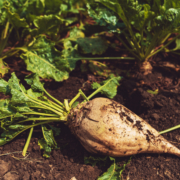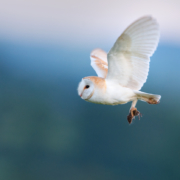Minnesota Farmers Leading Phosphorous Fight
Phosphorus is a naturally-occurring nutrient that is essential for plant life. But, it can be bad for our waterways by causing algal blooms which results in depleted oxygen in the water, which in turn harms plants and wildlife and can disrupt the ecosystem.
Maintaining clean and healthy waterways is a top priority for the sugar industry, which is why the farmers of the Southern Minnesota Beet Sugar Cooperative (SMBSC) have taken action to help stamp out the effects of phosphorus.
And their efforts have garnered praise from conservationists and regulators alike.
In 1999, the SMBSC looked to increase the production capabilities of their factory in Renville, Minnesota, approximately 100 miles west of Minneapolis. Because sugar beets are approximately 75 percent water, processing more than 2 million tons of sugar beets a season requires the successful management of more than a million gallons of water a day. A new wastewater treatment plant was necessary.
In an effort to minimize phosphorus levels in the Minnesota River Basin, SMBSC worked in conjunction with the Minnesota Pollution Control Agency during the permitting process to develop a plan to offset potential discharges from their wastewater treatment plant.
For every pound of possible phosphorus released, SMBSC would ensure that 2.6 pounds of nonpoint source pollution does not enter the waterways.
Unlike point source pollution, where contaminants enter the water at an identifiable point such as a factory, nonpoint source pollution occurs when rain runoff or drainage sweeps pollutants into water sources.
This type of pollution is responsible for most of the excess phosphorus found in Minnesota waterways. In fact, a 2004 study prepared for the Minnesota State Legislature found that “nonpoint sources of phosphorus account for 69 percent of the phosphorus entering Minnesota surface waters.” And of that amount, an estimated 25 percent of phosphorus came from cropland runoff.
“As farmers, we have a sincere respect for the resources that have been gifted to us,” says Kyle Petersen, chairman of the board for SMBSC. “We are committed to preserving a sustainable and healthy natural environment and knew that we had to take action to defend our waterways.”
As part of that commitment, SMBSC created incentives for farmers and cattle ranchers to reduce phosphorus pollution from nonpoint sources.
SMBSC worked with their more than 500 farmer shareholders to encourage the use of cover crops to minimize soil erosion caused by wind or rainfall and greatly reduce cropland runoff.
More than 75 percent of SMBSC growers now use a cover crop on their sugar beet fields. Not only are they taking strides to protect the environment, but SMBSC growers have found that cover crops protect the emerging beet plants and improve soil health, leading to an increased yield.
The cooperative has also worked with a local cattle company to stabilize a streambank and put into place measures to restrict cattle from entering the water and reduce pollution.
Not content to simply meet their goals, SMBSC has remained well below the phosphorus release limit established by their permit while exceeding their stated phosphorus reduction commitment.
SMBSC has been credited with preventing more than twice as much phosphorus from entering Minnesota surface waters as required by their permit. In total, that’s a reduction of more than 219,000 pounds of phosphorus.
The Minnesota Pollution Control Agency estimates that between 2000 and 2014, Minnesota reduced phosphorus in the Mississippi River Basin by 33 percent, with 8 percent being attributed to cropland best management practices.
We are proud to be leading the fight against nutrient pollution in the Minnesota River Basin,” says Steven Domm, President and CEO of SMBSC. “We work and live in this community and realize that preserving it for future generations is a shared responsibility.
These efforts have rightly won accolades from environmental groups and have been highlighted as an example of best practices for other facilities to follow.
Clean Up the River Environment (CURE) – a Minnesota non-profit dedicated to protecting the Upper Minnesota River Watershed – awarded SMBSC with CURE’s first “good business award” for their work in reducing pollutants. And the USDA Office of the Chief Economist has highlighted SMBSC’s efforts in a “Farm of the Future” profile.
SMBSC continues to be on the forefront of sustainable nutrient management practices. Through their work to raise awareness of the issues surrounding phosphorus pollution, their efforts to maintain healthy waterways will continue to have big impacts in Minnesota and beyond.


